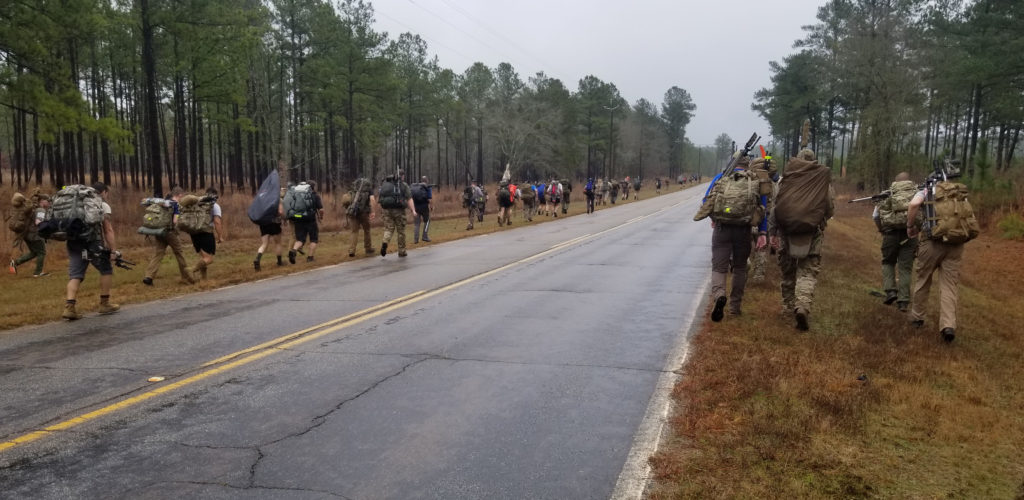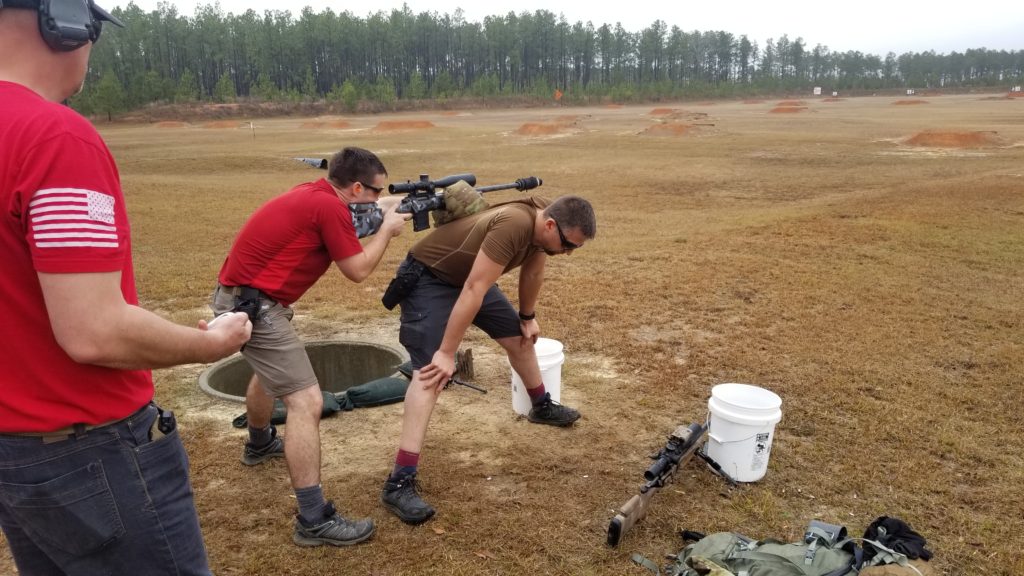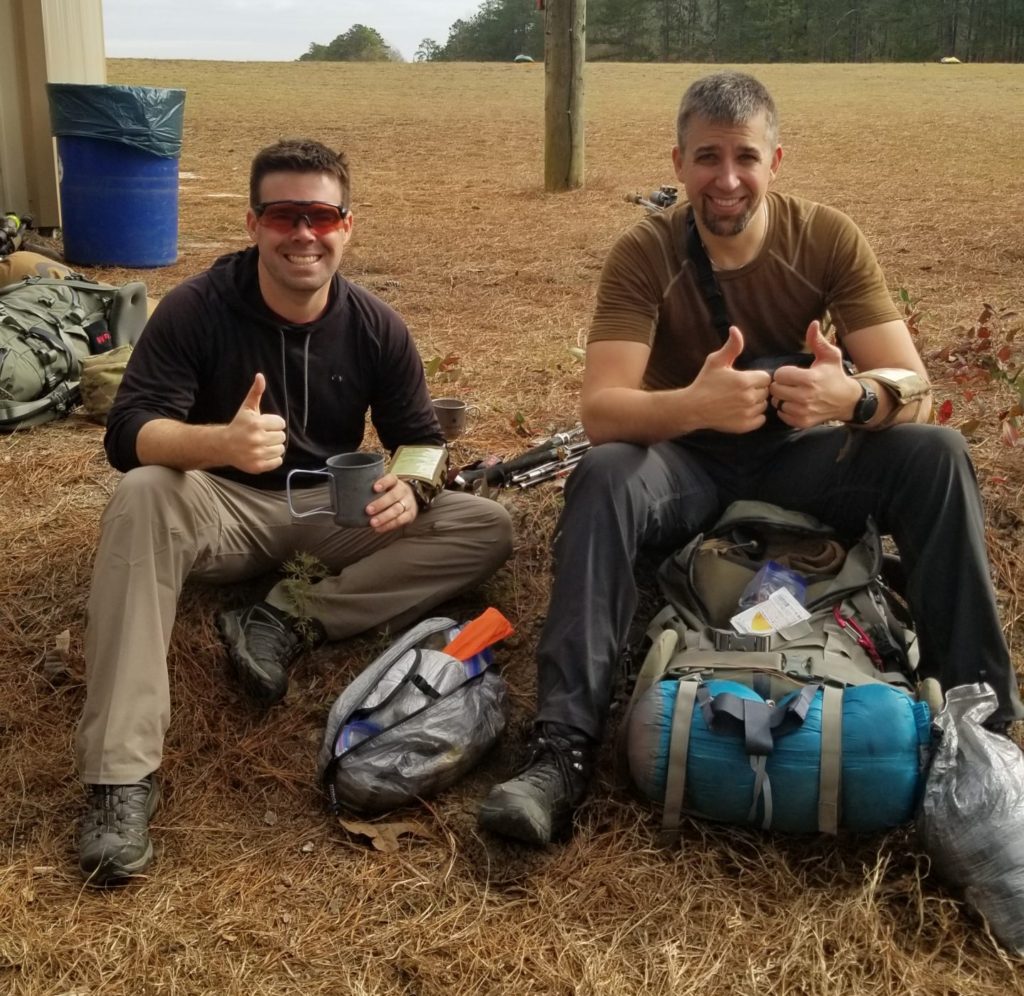With the 2021 Mammoth Sniper Challenge being announced for January 7-10, 2021, there’s no time like the present to start getting ready. If you’re not aware of what exactly is involved, here’s a quick overview.
Intro
The Mammoth Sniper Challenge is a team shooting competition designed to push competitors to their limits with blind shooting stages, while having the physical challenge of rucking between stages under time constraint. There are two divisions for competitors, the first being Regular which has competitors show up each morning with everything needed for the day. Regular is great for those wanting to push themselves but can reset each day at the hotel and over dinner…it’s also a great way to try Mammoth for the first time. This brings the Mammoth experience without the extra stress and weight of Toughman division. The Toughman division has competitors show up on Friday morning ready to go, carrying everything they think is needed (minus water) until Sunday afternoon.
At most precision rifle matches, competitors walk a short distance between stages or drive to reach shooting positions. Each squad has assigned ruck routes that will vary from a half mile to a big 5 miler. To stay in contention for the match, teams must finish in time by maintaining or beating a 16 minute-per-mile pace.
For the ten shooting stages, they are shot “blind” with limited information and no viewing of the targets before shooting. When competitors arrive at each stage, they are quarantined inside or behind a building to hide the targets from competitors. The stage briefing is then read twice, and 5 minutes are given for questions. Competitors are provided the opportunity to understand the course of fire, however certain details such as target locations, distances, order or other information might be omitted to challenge a team on the clock. Stage time limits are either four or five minutes to accomplish everything.
Rucking
Part of the Mammoth experience is rucking between stages. Whether hauling just a days’ worth of kit or everything for the weekend, competitors must haul it between stages on timed rucks. If a team fails to complete the ruck on time, they are dropped from the rest of the group regarding scores, and they are hauled around in the support vehicles between stages. You can still shoot; however, your score is moved down the list to being grouped with teams based on what day the team was dropped.

The rucks are not scored for competition, however, as teams finish they choose placement in the shooting order. Sometimes a team might want to shoot early, so they have time to heat up some chow, or wait until later in the order to recover from a long ruck. Keeping track of your pace on a smart watch is invaluable for ensuring you’ll make the ruck times…because if you fail to meet the 16-minute per mile standard you’ll get to ride in the van watching everyone else continue rucking. While you can keep shooting, you’re out of the running for top placement and prize table walk.
Shooting
There are three days of shooting stages at the match. The first two days are shot with your squad and are shot blind. This means that the targets and shooting positions are concealed from view and squads must adapt on the fly. Sometimes target distances were provided, other times simple critical pieces of information were provided such as shooting position but little else. There were eight stages that tested shooting skills of both shooters working together as a team to maximize points. If a team was very quick at finding and ranging targets, or adapting a plan on the fly they might be able to get all of the shots off, however some stages were designed with a small “gotcha” that prevented a team from getting all rounds fired. Being able to prioritize what was possible for points instead of having an elaborate plan or gaming the system ensured a team did well. It was worthwhile for a team to keep track of time to enable communication whether to move to another shooter, change their target engagement plan or slow down and get the hits possible.

Targets were usually engaged with 3 shots, rewarding 2 or 3 points for a first-round impact and 1 point for follow up hits, or in a specified amount such as 1 or 2 shots for 1 points a piece but multiple passes on a target array. Again, it was beneficial to pay attention to ensure shots weren’t wasted or enough were fired to get points as some teams did not engage correctly and lost valuable points.
Without going into detail on each stage, being a well-rounded shooter with a pistol and rifle were rewarded based on the stage requirements. Having a rifle with the data being spot-on was essential as targets were not large. There were also quite a few points to be had if both team members were skilled with a pistol, something most precision rifle guys dread.
Sustaining
Regardless of division competing in, sustaining yourself and the team was essential throughout the day. The added physical stress of the rucks increased everybody’s calorie burn for the day. If shooting Toughman, adequate planning of this is essential to staying competitive. There’s the decision of what’s necessary, but keeping nutrition going was essential for us to complete the rucks and be cognizant enough to shoot the stages all three days. Having a food strategy is important to keep mentally sharp and physically able to keep going.

Teamwork
Because this is a team event, having a good partner makes all the difference. You need to be able to keep each other going through encouragement and sharing the misery. When it’s time to perform on the clock, you also need to work efficiently and in a supportive nature. Understanding each other’s strength and weaknesses allows the team to plan around maximizing opportunities with someone’s strengths and surviving points of weakness. For example, if there’s the option for who makes a series of off-hand shots and one of the team members is good at it, assign that task to pick up a few extra points.

Working on clear and concise communication without getting frustrated at each other will pay off in dividends. If there is a series of targets that need to be located and ranged, being able to split the workload and then share the information effectively allows both shooters to get more rounds fired, meaning more scoring opportunities. Another thing to work on as a team is trusting each other, whether it is information being relayed or trusting their skills to get the job done.
Final Thoughts
The Mammoth Sniper Challenge is not for the feint of heart. That being said, you can survive to cross the finish line. Because of the rucks and blind stages, it’s not just another shooting match. Being able to make the rucks, score some points on shooting stages and do it for three days with everything you need on your back is what makes it harder than other events.
To sum up Mammoth, it is fun, it is challenging, it sucks, and it is rewarding. Regardless of your division, if you’ve rucked the miles and made it across that final finish line you know the feeling of accomplishment for surviving the suck with your partner. At the end of it, that sense of accomplishment seems to be what drives everyone to go back and do it again.
For some more reading, here’s my load out from the 2020 event.


